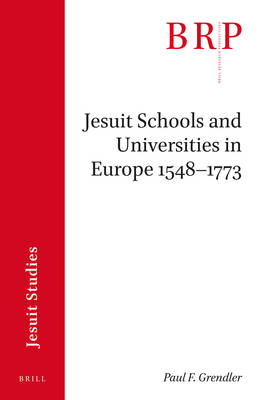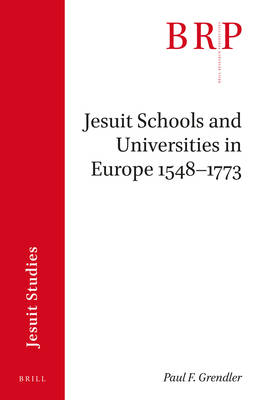
- Afhalen na 1 uur in een winkel met voorraad
- Gratis thuislevering in België vanaf € 30
- Ruim aanbod met 7 miljoen producten
- Afhalen na 1 uur in een winkel met voorraad
- Gratis thuislevering in België vanaf € 30
- Ruim aanbod met 7 miljoen producten
Zoeken
Jesuit Schools and Universities in Europe, 1548-1773
Brill's Research Perspectives in Jesuit Studies
Paul F Grendler
€ 121,45
+ 242 punten
Omschrijving
Paul F. Grendler, noted historian of European education, surveys Jesuit schools and universities throughout Europe from the first school founded in 1548 to the suppression of the Society of Jesus in 1773. The Jesuits were noted educators who founded and operated an international network of schools and universities that enrolled students from the age of ten through doctoral studies. The essay analyzes the organization, curriculum, pedagogy, culture, financing, relations with civil authorities, enrollments, and social composition of students in Jesuit pre-university schools. Grendler then explains Jesuit universities. The Jesuits governed and did all the teaching in small collegiate universities. In large civic-Jesuit universities the Jesuits taught the humanities, philosophy, and theology, while lay professors taught law and medicine. The article provides examples ranging from the first Jesuit school in Messina, Sicily, to universities across Europe. It features a complete list of Jesuit schools in France.
Specificaties
Betrokkenen
- Auteur(s):
- Uitgeverij:
Inhoud
- Aantal bladzijden:
- 118
- Taal:
- Engels
- Reeks:
Eigenschappen
- Productcode (EAN):
- 9789004391116
- Verschijningsdatum:
- 22/11/2018
- Uitvoering:
- Paperback
- Formaat:
- Trade paperback (VS)
- Afmetingen:
- 152 mm x 231 mm
- Gewicht:
- 181 g

Alleen bij Standaard Boekhandel
+ 242 punten op je klantenkaart van Standaard Boekhandel
Beoordelingen
We publiceren alleen reviews die voldoen aan de voorwaarden voor reviews. Bekijk onze voorwaarden voor reviews.








